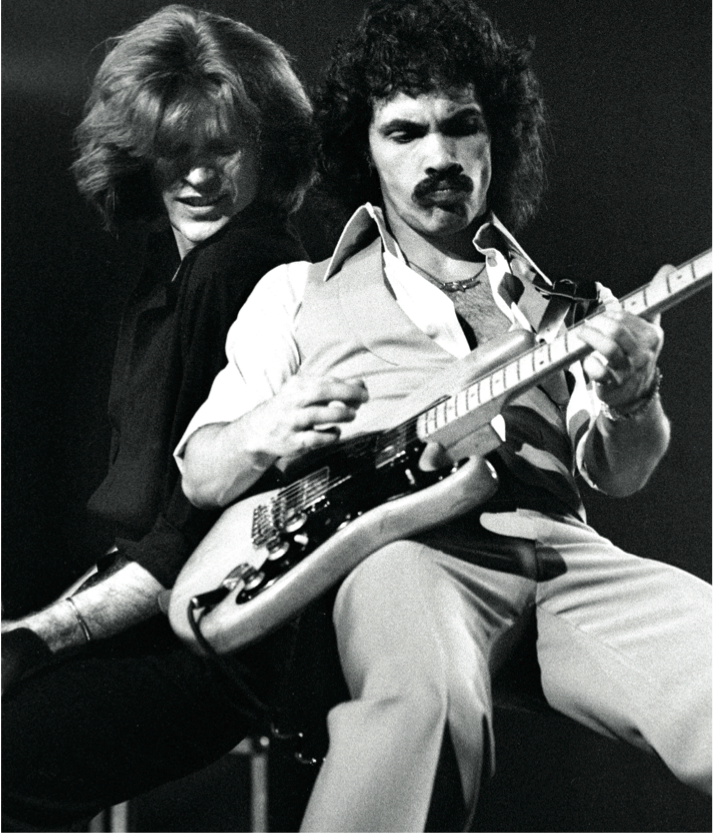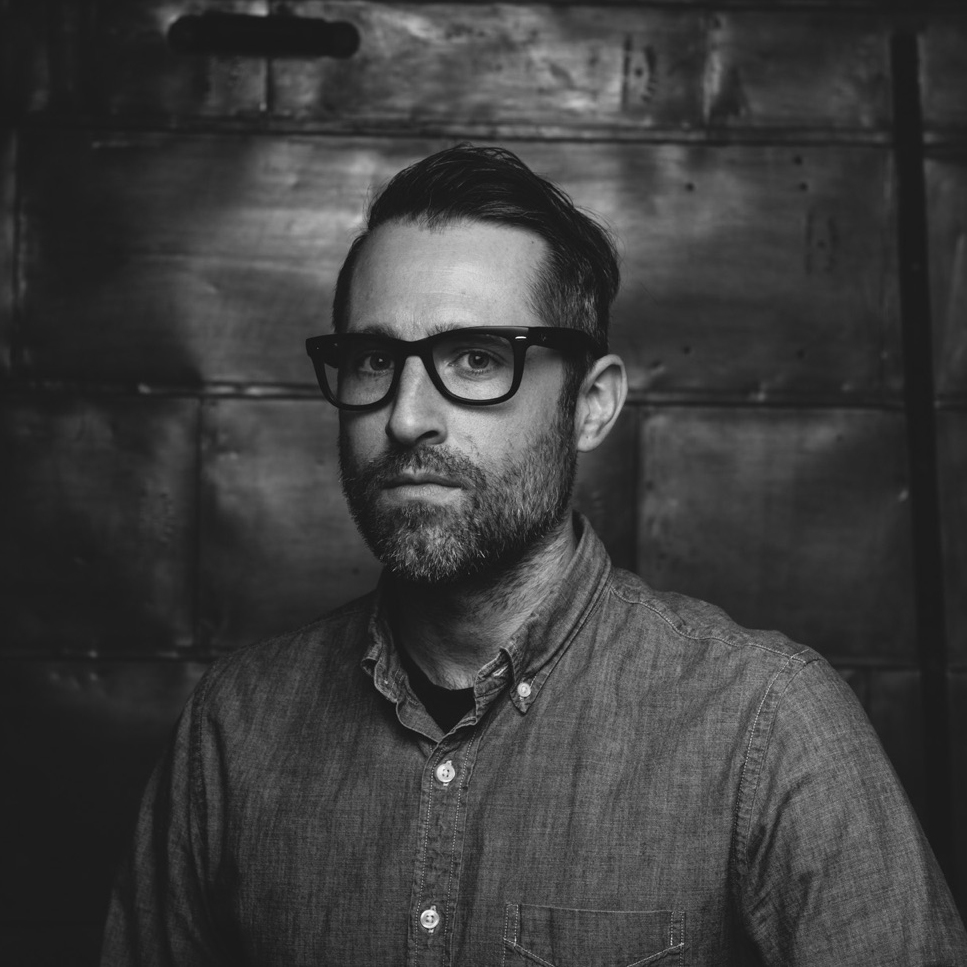Hall & Oates' John Oates Talks “Private Eyes” Chord Changes and His Custom Martin Acoustic

His guitar playing and vocal harmonizing in the blue-eyed soul duo Hall & Oates earned him mega chart success and an induction into the Rock and Roll Hall of Fame, but what Guitar World readers really want to know is…
I’ve seen you more than 10 times over the years and I’m excited to check out your Daryl Hall & John Oates: Recorded Live from Dublin DVD. Why was Ireland the right place to film this? — Stacy
Believe it or not, after all these years touring the world Daryl and I had never played Ireland. We knew right off the bat there would be an Irish audience that would be excited to come see us. We also knew we were playing the Olympia Theatre, which is a legendary theater where the Beatles played.
If you combine those facts, plus the fact that the Irish really love music, we figured that it was gonna be a good night. And it was. It was awesome.
So many players get so focused on technique that they overplay in songs. But you have managed to write amazingly catchy songs and know just when, and when not, to add a guitar part. Were you innately restrained, or is that something you worked on? — Charles Drogas
It’s called musicianship, and tastefulness. [laughs] What a concept! Listen, when you’re part of a large band with unbelievably good musicians, restraint and learning what your role should be is part of what makes you a good player. If you’re the only guitar player in a power trio you have a lot more freedom to do whatever you want.
But when you’re in a band with keyboards, guitars, singing and background vocals, you have to pick and choose your spots. In Hall & Oates the roles shift, I may be taking a solo on one song and rhythm on another. Some bands have very specific roles, where this guy is lead, this guy is rhythm, this guy is acoustic. And in my solo shows I play everything: from fingerpicking to R&B to rock and roll. It’s really about tastefulness and how you can enhance your part to make the sum of all the parts better.
All the latest guitar news, interviews, lessons, reviews, deals and more, direct to your inbox!
Your cameo on the Garfunkel and Oates comedy TV show is amazing. How did that come about? — Kim
I’ve known those girls [Riki Lindhome and Kate Micucci] for quite a while. I actually met them back in the MySpace days. We’ve become friends and I’ve always been a big supporter of theirs. I think they’re brilliant. So when they got their TV show and asked if I’d cameo on it, I said, “Of course!” They made me the owner of a porn shop in Chatsworth, California, which I thought was pretty funny. They were coming in to buy a porn DVD, and they were kinda embarrassed about it. It was a pretty cool episode.
When you write songs do you write vocal melodies or guitar lines first? — Bronson Pinot
The rule is that there are no rules. Don’t put any rules on your songwriting process. Whatever it takes to get there. It could be lyrics first, a groove, a chord change, a melody, a headline in a newspaper or something someone says to you. Songwriters just keep their minds open to any possibility.
War Babies is one of my favorite albums and it’s also one of your oddest. Some of the songs have a fusion-y sound to them, especially on the guitar solos. How much did producer Todd Rundgren have to do with the sound and stylistic direction of that album? — Henny Bingham
He definitely had a lot to do with the sound, because we recorded it in his studio and he was the producer. The thing about Todd Rundgren is that everything he does has a very bold stamp that say’s “Todd” on it. He’s a very strong personality and has a very distinct musical point of view. We also had guitarist Richie Cerniglia and keyboardist Don York who were both very jazz influenced.
Those two guys brought a little bit of the fusion thing to the record. But we were looking to make more of a progressive rock album. Our idea was to push boundaries and see how far we could go from the acoustic R&B we had done on the previous album, Abandoned Luncheonette. We wanted to take a bold step and that’s why the album is so different sounding.
What was more challenging for you: learning how to sing harmonies or play guitar? — Bankcroft
Well, I sang and played simultaneously. I was a singer from the time I was a real little kid, and I started playing guitar when I was six. I began accompanying myself singing on guitar in a very simplistic way back when I was first learning. In the Sixties I became very interested in harmony singing.
I listened to a lot of street-corner doo-wop, which is nothing but vocal harmonies. I learned a lot from the Temptations, the Impressions, Smokey Robinson and the Miracles. So my harmony singing was pretty well developed, and then I met Daryl. Working with him really took our harmony singing to another level.
Who would you rate as the top three guitarists most influential to your playing style? — Gloria Moralez
My three biggest influences are Doc Watson, Mississippi John Hurt and Curtis Mayfield. And if I had to add a fourth I’d say Chuck Berry. If you combine all those styles that’s pretty much how I play.
I play in a Hall & Oates tribute band. In your opinion what is the most technically difficult song to play and why? — Vance Duggins
The most difficult thing for the average person to tackle with Hall & Oates songs is the unique chord progressions. Daryl has a very interesting way of putting chords together and putting melodies over chords. There are a few, but if I had to pick just one I would say “Private Eyes.” It’s a heavy pop song with very unusual, more sophisticated chord changes with major sevenths and four over fives, chords that aren’t usually associated with heavy pop or rock.
If you had to pick one amp and electric guitar to be stranded on a desert island with, what would you chose? — Curtis LaFlame
Wow. That’s a tough one. I’d say I would take my Fender ’65 Princeton Reverb because it can pretty much do anything. It’s small enough to carry, got enough punch to play a gig with and it’s amazing in the studio. Of course on a desert island I don’t think I’d have to deal with any of that stuff, but who cares! [laughs] If I had one guitar, I’d take my custom Martin. But if it’s an electric, I’d take my ’58 Strat, which I’ve had since 1972.
I have seen you perform with a really sweet custom Martin acoustic. Can you tell us the story behind that guitar? — Kenny Deen
It’s about two years old. I went up to the Martin factory in Nazareth, Pennsylvania, to look at the museum and take a factory tour. While I was there I noticed a 00-18 that they were making with the Thirties’ sunburst look. I really liked the look of it. I’ve played Martins over the years but never had a custom one. I was so impressed with the workmanship at the factory, so I said, “Let’s do it!” The 1934 00-18 was our starting point, but essentially it’s the 00-18 only in the shape of the body.
I wanted the body to have more depth, so I asked them to make it half-inch thicker. I wanted more bottom end and punch out of the smaller bodied guitar. Then we went around feeling different necks to figure out what profile I wanted. I like the Eric Clapton 000-28 model, so we started there. Then I changed it because I like necks to not get too thick as they get up to the body, because I use my thumb a lot.
Cosmetically I had them put the herringbone purfling around the top and a custom abalone 12th-fret inlay of my Good Road to Follow logo, with a circle and compass points. Then we used the compass points in abalone as the fret markers. It’s a really unique guitar. It’s one of a kind, and awesome.
Photo: Hoaward Barlow/Redferns/Getty Images
Brad is a Brooklyn-based writer, editor and video producer. He is the former content director of Revolver magazine and executive editor of Guitar World. His work has appeared in Vice, Guitar Aficionado, Inked and more. He’s also a die-hard Les Paul player who wishes he never sold his 1987 Marshall Silver Jubilee half stack.

